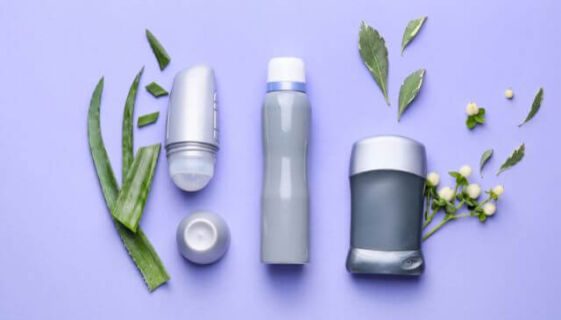To many, cancer seems like a mysterious disease that you’re either genetically predisposed to or else it strikes at random. In reality, there are many environmental, lifestyle, and workplace hazards that may impact your risk for cancer. At Because Health, we help educate consumers about environmental health issues, including cancer. That’s why we wanted to highlight easy ways to limit your exposure to three environmental health hazards you may encounter during everyday life.
PFAS:
The Problem: PFAS, or per- and polyfluoroalkyl substances, are chemicals used to make products non-stick or to repel liquids. You’ll find PFAS in non-stick pans, rain jackets, stain-repellent carpets or furniture, and food packaging. While PFAS may seem handy, it’s been linked to kidney and testicular cancer (1) and can also lead to hormone disruption or developmental problems (2).
To limit exposure: Try switching from non-stick pans to stainless steel, ceramic, carbon steel, or cast iron. All of these materials are great non-toxic alternatives and with proper care can even make your scrambled and fried eggs without any sticking! Avoid carpets or furniture that advertises itself to be treated or coated ‘stain-resistant’ or ‘stain repellent’. Those are keywords for PFAS. Instead of choosing stain-repellent furniture, look for fabrics in dark colors and synthetic fabrics. These fabrics make spot cleaning easy and will hide stains and spills, without the harmful chemicals.
Flame Retardants:
The Problem: Flame retardants were added to furniture, electronics, children’s clothing, and building materials as a way to prevent and suppress fire growth. But it turns out flame retardants don’t actually help with fire suppression and are pretty harmful to health. These chemicals have been linked to thyroid and possibly breast cancer (3, 4), infertility, and lower IQ.
To limit exposure: If you’re looking for new furniture, make sure the product tag specifically says it does not contain added flame retardants. Flame retardants from electronics can migrate into your household as dust, so make sure to dust frequently with a wet microfiber cloth and vacuum with a HEPA filter.
BPA and Other Bisphenols:
The Problem: BPA, and other bisphenols, is used to make hard plastic soft and clear. They are found in food and drink containers, receipt paper, and many other hard plastics. Bisphenols, however, are endocrine-disrupting chemicals that are linked to breast and prostate cancer (5).
To limit exposure: Don’t be fooled by “BPA-free” packaging—companies usually just replace BPA with another bisphenol like BPS or BPF, and these replacements are often just as harmful, or more harmful, than BPA (6, 7). To avoid bisphenols, try using water bottles and food storage containers made from stainless steel or glass. Never heat up food in plastic containers because bisphenols and other harmful chemicals can leach into your food.
Individual changes can make a huge difference in reducing your exposure to cancer-causing chemicals. Check out Because Health for more environmental health articles, product roundups, and lifestyle tips!
- https://www.ncbi.nlm.nih.gov/pmc/articles/PMC3855507/
- https://www.epa.gov/pfas/basic-information-pfas
- https://www.sciencedaily.com/releases/2017/04/170402111311.htm
- https://oem.bmj.com/content/73/8/564
- https://www.ncbi.nlm.nih.gov/pmc/articles/PMC4602822/
- https://www.ncbi.nlm.nih.gov/pmc/articles/PMC4492270/
- https://www.ncbi.nlm.nih.gov/pmc/articles/PMC6427910/
Stephanie Brinker is the marketing and communications associate for Because Health. She has an MPH from UC Berkeley.






